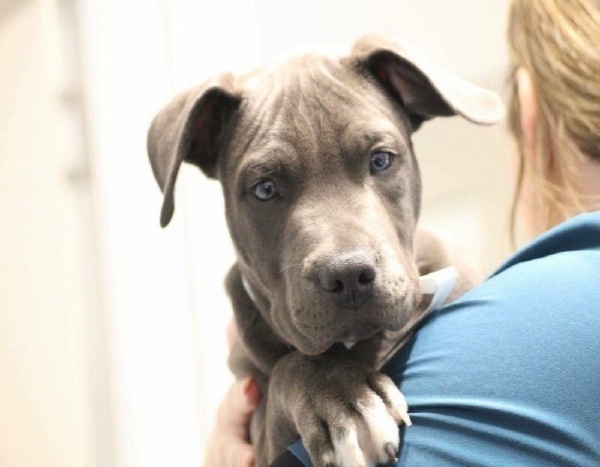
|
|
Let’s talk LUMPS!
|
| |
Here at Gawler Animal Hospital “Check Lump” is one of the more common bookings we see, or as something raised at the routine 6-monthly health check or vaccination. So, we thought it was worth addressing the ins and outs of lump checks!
When a lump comes to our attention- the first things we do is assess it broadly;
- Where is it located on the body and what structures are nearby?
- Is it sore or not?
- Is it something on the skin, under the skin or deeper?
- Is it hard, soft or fluidy feeling?
- Is the skin normal or is there hair-loss, ulceration, discharge?
As we make these assessments, we are making a list in our head of what it might be;
- A normal structure that is inflamed (like a lymph node or salivary gland)
- A tumour of the skin (benign or malignant)
- Infection or a foreign body causing swelling
What can we tell form looking and feeling the lump?
- We will often feel and inspect lumps and a system of “pattern recognition” to form theories about which they might be (based on what we have seen before)
- Discharge might suggest infection, abscess or foreign bodies
- Some types of lumps have distinctive appearances leading us to suspect what they might be
- Sadly, despite how much we wish it, looking and touching a lump is never truly diagnostic!
What do we need to do to find out more?
The only way to be able to tell what a lump is- is to sample it. We do this in a few different ways;
- Impression smear- rubbing the surface of a lump on a slide to assess microscopically
- Fine needle biopsy- using a needle to sample a lump to then assess microscopically
- Surgical biopsy- taking a small section of a lump surgically and sending for assessment at the lab (usually by a process called histopathology)
- Surgical excision- taking the whole lump and sending that off to the lab to assess.
What we recommend if you are having a pet’s lump checked will vary by case and in discussion with you about the case.
Some cautionary tales;
A lovely middle aged domestic short hair cat was seen with a scab on his head that the owner had been watching and just wouldn’t heal. Because the scabbed area was quite lumpy, instead of just trying antibiotics the Dr Michelle decided to do a fine needle biopsy. This showed that the scab was an often-nasty type of tumour called a “mast cell tumour”. This diagnosis meant we were able to remove the mass with appropriate surgical margins and continue other necessary workup sooner rather than later.
Another client came in with a dog that had a lump on her nipple region. Lumps such as this are often mammary tumours (which are not the best to sample with a needle). Dr Meghan decided to do a sample as a precaution and found that it appeared to be a big sebaceous cyst! This is a benign mass but the owner decided removal was the best option for the dog’s comfort. Knowing it was a cyst helped us make appropriate surgical decisions and gave the owner some peace of mind.
Final thoughts;
We appreciate not everyone will want to test every lump on their pet BUT I hope this helps you to understand why we can never 100% decide what something is based on look and feel alone. Sometimes more diagnostics are necessary to get the information we need about those pesky lumps your find!
If you find a lump that is worrying you- don’t hesitate to book it in for a “lump check” with our knowledgeable team.
|
|
|

|
|
Keeping your pet mobile
|
| |
As dogs reach their senior years, they may develop mobility troubles that cause them difficulties when navigating stairs, walking over smooth floors, or rising from rest.
If you notice your pet starting to have issues moving around comfortably and confidently, we'd recommend the following:
1. A veterinary check-up
If your pet has not seen our veterinary team within the last three months, we recommend a general health check. At this time, we will perform a physical examination on your pet, particularly focusing on any factors that could hamper their mobility, such as:
- Reduced vision
- Signs of reduced coordination or strength
- Symptoms of arthritis
- Overgrown claws
- Symptoms of cognitive decline (old age brain changes)
Depending on your pet's history and physical examination findings, we can then discuss potential options for recommended diagnostic testing (such as blood tests or joint X-rays) and programs for the management of any health issues (such as anti-inflammatory pain relief for arthritis).
2. Home support
Once your pet's medical issues are treated, you can start to consider how you will support its needs at home.
Pets with reduced vision will benefit from:
- A consistent layout of furniture
- Increased use of gentle voice commands to help them navigate to you
- The use of night lights in dim light conditions
Pets with any joint or coordination issues will usually benefit from mobility aids such as:
- Easily accessible toileting facilities (such as portable grass toileting mats)
- Tracks of non-slip carpet over smooth floors
- Pet steps or ramps to access the couch or bed (and a bit of training on where these are located)
- Slightly raised, supportive bedding (e.g. thick padded memory foam mattresses)
- Raised water and food bowls
- Tummy support bands for helping large dogs rise from rest or navigate stairs
For further advice on supporting your older pet, consult our senior-savvy veterinary team! |
|
|

|
|
Anaesthesia in aging pets
|
| |
“But, isn’t he/she too old for a dental procedure?”
Our team would love to help provide reassurance about any fears that pet owners may have about their older pet undergoing a general anaesthetic for dental or surgical procedures. Here’s what we can do to help support senior pets receive the best and safest healthcare.
1. Myths about old age
First and foremost, old age is not a health problem in itself! We see many senior pets who still have excellent cardiovascular and organ health, and therefore have minimal additional risk associated with undergoing a general anaesthetic.
2. Quality of life
As pet owners ourselves and keen advocates of pet welfare, we will only recommend necessary dental or surgical procedures—that is, procedures that will help maintain your pet’s health, comfort, and quality of life.
Regular dental health maintenance not only prevents pets from suffering from chronic dental pain but also supports their general health by keeping unhealthy bacteria in their mouth to a minimum. This helps to prevent unhealthy bacteria from entering their bloodstream and negatively affecting their organ health.
In pets with lumps, we will usually be able to offer a range of options for investigation and treatment (depending on your pet’s specific case), allowing you to select the options your pet is likely to cope with best.
3. Pre-anaesthetic safety checks and planning
Before proceeding with a general anaesthetic in a senior pet, we can get a more informed idea of their general health (and therefore any likely increased anaesthetic or surgical risks) by performing a physical examination and appropriate pre-anaesthetic testing on them, such as blood and urine tests.
If any organ issues are identified in your pet, we can then make recommendations on how to help minimise their risk, such as:
- Avoiding the use of certain sedative drugs that may not suit them
- Considering staged procedures (i.e. two shorter anaesthetics)
- Referring your pet to a specialist for more advanced diagnostic or treatment options
For further advice on the safest healthcare for senior pets, consult our knowledgeable veterinary team. |
|
|
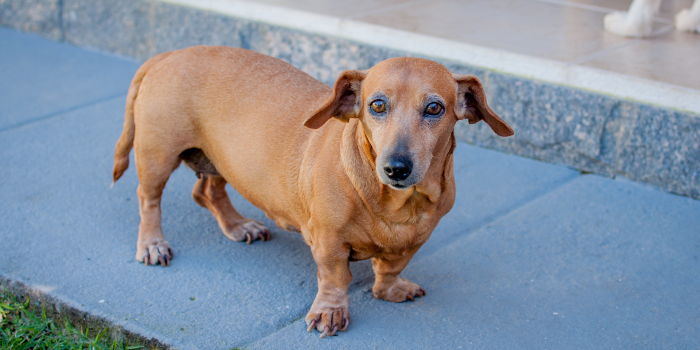
|
|
Noodle’s niggling discomfort
|
| |
Noodle the seven-year-old dachshund was a loyal little fellow, always shadowing his elderly owner Maeve for household or garden-related chores regardless of the hour.
So, when Maeve awoke for a bathroom trip one night, Noodle sleepily arose to accompany her. When he jumped off the bed, however, the dog landed awkwardly and let out a shriek.
Startled, Maeve turned on the light to find Noodle sitting on the ground, shivering. Usually, he wouldn’t let her out of his sight, but on this occasion, Maeve went to the bathroom alone and came back to find Noodle still sitting miserably on the bedroom floor. When she lifted him gently back onto the bed, the dog yelped again.
Whilst Noodle was able to walk around the next morning and toilet in the garden as usual, he still seemed uncomfortable and out of sorts, so Maeve phoned her local veterinary clinic for advice. The nurse on the phone advised Maeve to bring Noodle in for an assessment later that morning.
During Noodle’s check-up, the vet found that (apart from being a little on the heavy side) Noodle appeared to be in good general health. He did, however, show some consistent pain on gentle pressing on his mid to lower spine.
The vet advised that, given Noodle’s breed, the top differential diagnosis was a bulging disc in his spine causing pain. Given he wasn’t currently demonstrating any neurological (nerve) problems to his legs or tail, the vet recommended that Noodle be managed with strict confinement (i.e. a crate or small room) for the next few weeks and pain relief.
At his recheck two weeks later. Noodle was much more comfortable and appeared to be recovering well. He was sent home with a gradual physical rehabilitation program, and polite but firm instructions for healthy weight loss.
If your pet, like Noodle, ever suffers from a sudden injury, we recommend phoning our team promptly for further advice—we’re passionate about pet pain relief! |
|
|

|
|
Animal News In Brief
|
| |
Dog Walkers Beware: Emus on the Attack in NSW
Ruby Buchanan's peaceful walk near Broken Hill turned chaotic when aggressive emus charged her and her dogs. "Next minute, [I] turn around. There's an emu," Ruby recalled. Emus are highly protective during nesting season, seeing dogs as threats, akin to dingoes.
National Parks Western Area manager Jaymie Norris advises, "If you're walking a dog, just keep your eye open for emus." The emus' aggressive behaviour is a sign of their recovery after years of drought.
Click here to read the full story at ABC News.
Comedy Pet Photo Awards: Dog's Cat Flap Squeeze Takes Top Prize
The 2024 Comedy Pet Photo Awards have been announced, and the top prize goes to Sarah Haskell for her hilarious photo of a dog squeezing through a cat flap, titled "Not just for the cats!" Haskell said, "I am delighted that Hector and I have been part of it, and am tremendously proud to be a winner." The competition, now in its fifth year, showcases the joy pets bring to our lives.
Visit ABC News to see all the entertaining photos.
New Pet Park Opens at Sydney Children’s Hospital
Sydney Children’s Hospital at Westmead has opened a new pet park, allowing kids to spend time with their pets in the hospital. Partnering with the Petbarn Foundation, this unique facility provides a safe outdoor area for children undergoing treatment to be reunited with their furry friends.
“Pets offer special comfort, especially to a sick child wanting to cuddle their furry friend," said Janelle Bloxsom, Manager at the Petbarn Foundation. Kristina Keneally, CEO of the Sydney Children’s Hospitals Foundation, added, “Kids undergoing treatment dream of doing ordinary things like playing in a park with their family pet.”
Plans are underway for a second pet park at the Sydney Children’s Hospital in Randwick.
Click here to read the full story at Pet Industry News. |
|
|
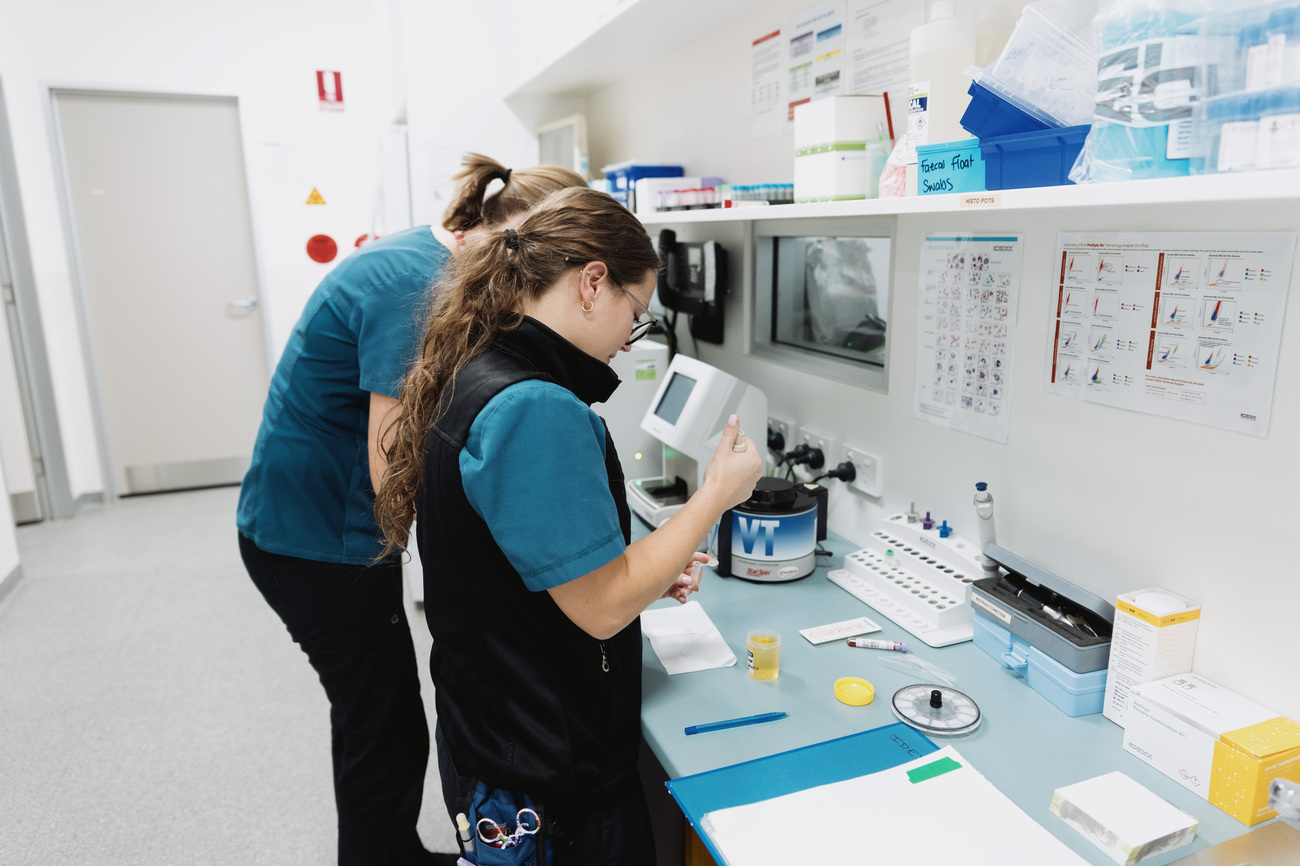
|
|
Urine luck!
|
| |
Whether it’s a “number one or two”, we understand that pet toileting accidents around the house are no fun to deal with!
Here are some of the top reasons senior pets start having unusual toileting accidents indoors and what we can do about them.
1. Incontinence
Urinary incontinence often occurs due to “bladder weakness” – this is usually a developed bladder sphincter mechanism problem. Some spinal issues can also affect bladder or bowel nerve functions, resulting in changes to toileting abilities.
2. Abnormal urine or stools
Whilst senior pets may technically have reasonable “holding” capacity, they may still toilet around the house if they have an increased urge to do so.
Causes of increased urinary urge include:
- Causes of increased urine quantity, such as kidney disease
- Causes of increased urinary urgency, such as urinary tract infections, bladder stones, or lumps in the bladder
Increased faecal urgency is often due to gastrointestinal diseases causing bowel irritation, e.g. inflammatory bowel disease. However, pets may also strain out small amounts of faeces in odd places if they struggle with underlying constipation.
3. Difficulties toileting
Senior pets can be reluctant to go outside to toilet if they have eyesight or mobility issues (e.g. arthritis). This may lead them to toilet inappropriately around the house instead.
4. Behavioural changes
Pets developing cognitive decline (age-related brain deterioration) or other brain issues may become confused and forget their previous toilet training.
How do we treat the issue?
The first step in managing inappropriate toileting is to determine why the issue is occurring in the first place! This usually involves a full physical examination and basic diagnostic testing, such as blood and urine tests. In some cases, we may also recommend other tests, e.g. X-rays or ultrasound scanning of the bladder. Once we have a diagnosis, our vets can discuss treatment options to help normalise the pet’s problematic toileting habits.
For more information on pet brain and organ health, consult our vets—we’re experts at senior pet care! |
|
|
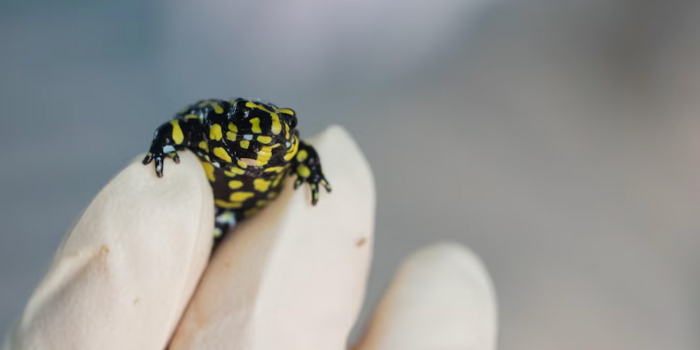
|
|
Milestone in Snowy Mountains: Record Release of Endangered Corroboree Frog Eggs
|
| |
A major milestone has been achieved in the NSW Snowy Mountains with the release of over 3,400 eggs of the critically endangered southern corroboree frog into Kosciuszko National Park. This tiny, iconic yellow and black frog has a wild population of just around 50.
"This is the most eggs we've produced since the recovery program started in 2001," said Deon Gilbert, Zoos Victoria threatened species biologist. The frog, which measures up to 3 cm, has faced threats from the amphibian chytrid fungus, drought, bushfires, climate change, and feral species.
Zoos Victoria and Taronga Zoo have been part of the breeding program, previously producing about 2,000 eggs annually. The recent release is a 70% increase. The eggs were released into both protected enclosures and wild habitats to help the frogs develop immunity to the chytrid fungus.
"We aim for wild-fit frogs to survive and breed," said Gilbert. "The latest release is invaluable for the species' survival. Without these efforts, the species would already be extinct."
The success of the breeding program offers hope. "Time is on our side, and I honestly think the future is going to be positive for the southern corroboree frog," Gilbert added.
Click here to read the ABC's full story.
Photo credit: Zoos Victoria/Gemma Ortlipp
|
|
|
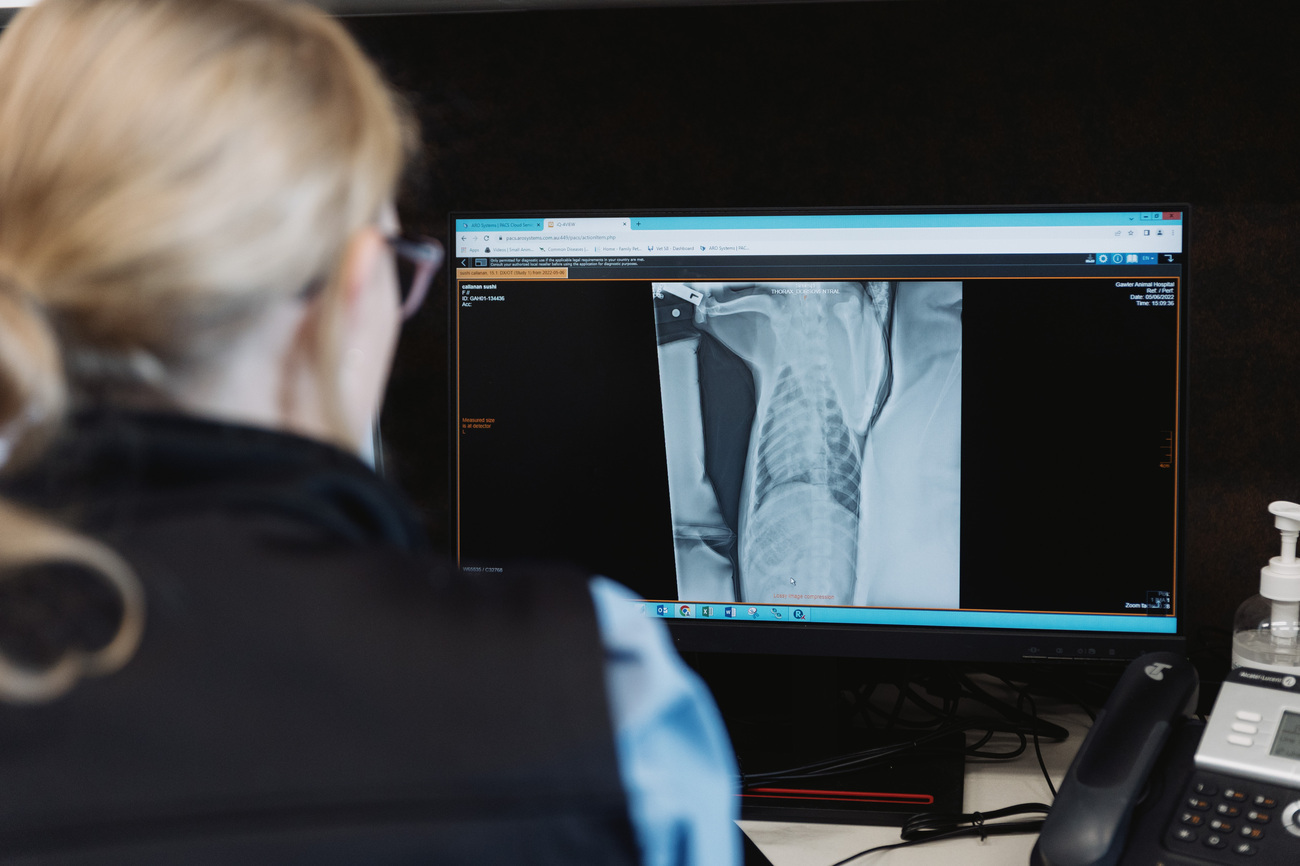
|
|
Four causes of chronic coughing
|
| |
*Ahem*. If your older dog has a cough that just won’t go away, it’s a good idea to book them for a prompt veterinary assessment with our experienced team.
Here are four potential causes of a chronic cough in an older dog, and how we can help.
1. Chronic bronchitis
Chronic bronchitis involves longer-term inflammation in the airways. This inflammation may initially be caused by a bacterial or viral infection or allergy (e.g. to second-hand cigarette smoke), but then triggers a cycle of ongoing coughing and airway irritation.
Chronic bronchitis coughs are often dry and may get worse with excitement or exercise.
2. Collapsing airways
Smaller breed dogs (particularly those who are middle-aged to older and overweight) can be prone to a progressive condition called “tracheobronchomalacia”, where the supportive cartilage structures in their larger airways become weaker. This means their airways may begin to briefly collapse during normal cycles of breathing, thereby triggering coughing episodes.
These coughs generally have a distinct “honking” tone and can be worsened with excitement or collar pressure around the throat.
3. Infections
Infectious coughs may involve airway infections (such as viral or bacterial causes of kennel cough), infections affecting the lungs (e.g. bacterial pneumonia), or infections affecting the cardiovascular system (such as heartworm).
Pets with bacterial infections may also demonstrate other symptoms of unwellness, such as a nasal discharge or fever.
4. Heart disease
Heart disease can result in coughing due to either direct pressure on the airways (from an abnormally enlarged heart) or fluid build-up within the lungs (from the heart failing to pump blood effectively).
These coughs may worsen when your pet is resting, and may coincide with other symptoms of heart disease (such as reduced exercise ability).
How can we help?
For any dog with a chronic cough, we will perform a full examination and history collection. This gives us direction to then advise on further diagnostic testing, which may involve treatment trials, chest X-rays or potential specialist referral.
Once we’ve pinpointed the cause of your pet’s problem, we can make suggestions to help curb that cough! |
|
|
This email contains comments of a general nature only and is not intended to be a substitute for professional veterinary advice. Please always consult your vet for specific advice on your pet's individual needs. |
|
|
[Footer]
|